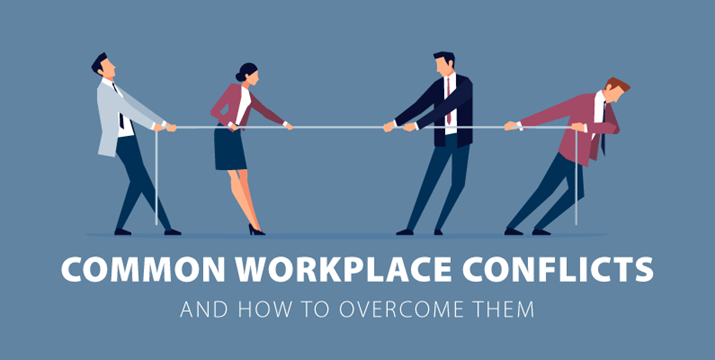Table of Contents
Hello, fellow IT engineers! Today, we’re diving into a topic that’s often overlooked but incredibly crucial for maintaining a harmonious and productive work environment: managing workplace conflict. Whether you’re coding, debugging, or collaborating on a project, conflicts can arise. Let’s explore how to navigate these challenges effectively, ensuring that our workspaces remain productive and positive.
Understanding Workplace Conflict
First things first, let’s understand what workplace conflict is. Conflict in the workplace occurs when there are disagreements or clashes between colleagues due to differences in opinions, values, or interests. In the IT world, conflicts can stem from various sources:
- Technical disagreements: Differing opinions on coding practices, software tools, or project management methodologies.
- Resource allocation: Disputes over the allocation of hardware, software, or team members.
- Communication issues: Misunderstandings due to unclear instructions, poor communication skills, or language barriers.
- Personality clashes: Differences in work styles, attitudes, or personalities.
Real-Life Example: The Code Review Clash
Let me share a real-life example to illustrate how conflicts can arise and be resolved. Imagine you’re working on a critical software project, and it’s time for the code review. Your colleague, Aman, critiques your code heavily, pointing out several areas for improvement. You feel that Aman is being overly critical and not considering the tight deadlines you’ve been working under.
This situation can quickly escalate into a conflict if not handled properly. Here’s how you can manage it:
- Stay Calm and Listen: Instead of reacting defensively, take a deep breath and listen to Aman’s feedback. Understand that the goal is to improve the project, not to undermine your work.
- Seek Clarification: If you disagree with some points, ask for clarification. “Aman, could you explain why you think this approach is better? I’m open to understanding your perspective.”
- Express Your Viewpoint: Share your side of the story calmly and respectfully. “I appreciate your feedback, Aman. I chose this method because it seemed more efficient given our time constraints. Do you think there’s a middle ground?”
- Collaborate on Solutions: Work together to find a solution that satisfies both parties. Maybe Aman’s suggestions can be incorporated in a way that aligns with the project timeline.

Strategies for Managing Workplace Conflict
Now that we’ve seen an example, let’s delve into some effective strategies for managing workplace conflict:
1. Open Communication
Communication is key in any relationship, and the workplace is no exception. Encourage open and honest communication within your team. Create an environment where team members feel comfortable expressing their concerns and viewpoints.
2. Active Listening
Practice active listening. This means paying full attention to the speaker, acknowledging their message, and responding thoughtfully. Avoid interrupting or dismissing their concerns.
3. Empathy and Understanding
Put yourself in your colleague’s shoes. Try to understand their perspective and the reasons behind their actions or opinions. Empathy can go a long way in resolving conflicts.
4. Establish Clear Expectations
Set clear expectations for roles, responsibilities, and project goals. This can prevent misunderstandings and conflicts related to task assignments and deliverables.
5. Seek Mediation
If a conflict escalates and cannot be resolved between the parties involved, consider seeking mediation from a neutral third party, such as a supervisor or HR representative. They can provide an unbiased perspective and facilitate a resolution.
6. Focus on Solutions
Shift the focus from the problem to finding solutions. Encourage brainstorming and collaboration to develop mutually acceptable solutions.

Real-Life Example: The Resource Tug-of-War
Let’s look at another real-life example. Your team is working on two high-priority projects simultaneously, and there’s a shortage of experienced developers. You and your colleague, Saranya, both need the same developer for your respective projects. This could lead to a resource tug-of-war.
Here’s how you can manage this conflict:
- Identify the Issue: Acknowledge that both projects are important and need the developer’s expertise.
- Communicate Needs: Discuss with Saranya why you need the developer and listen to her reasons as well.
- Explore Alternatives: Brainstorm alternatives, such as splitting the developer’s time between projects or bringing in an additional resource.
- Agree on a Plan: Come to a mutual agreement that ensures both projects can move forward without compromising quality.
Conclusion
Managing workplace conflict is an essential skill for IT engineers. By fostering open communication, practicing empathy, and focusing on collaborative solutions, you can navigate conflicts effectively and maintain a positive work environment. Remember, conflicts are not inherently bad; they can lead to growth and innovation if managed properly.
So, the next time you find yourself in a workplace conflict, take a step back, breathe, and approach the situation with a calm and solution-oriented mindset. Happy coding and collaborating!




Leave a Reply